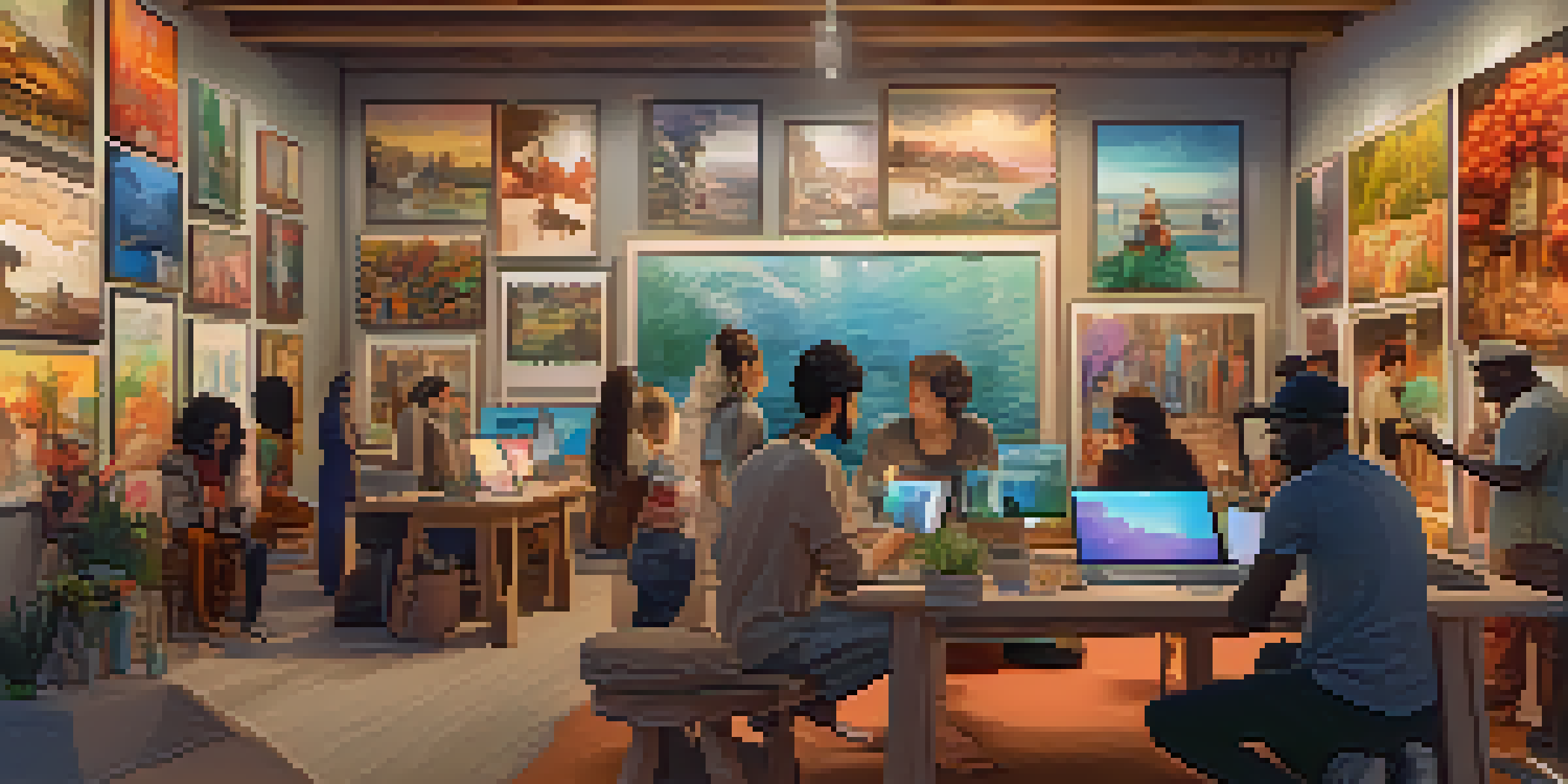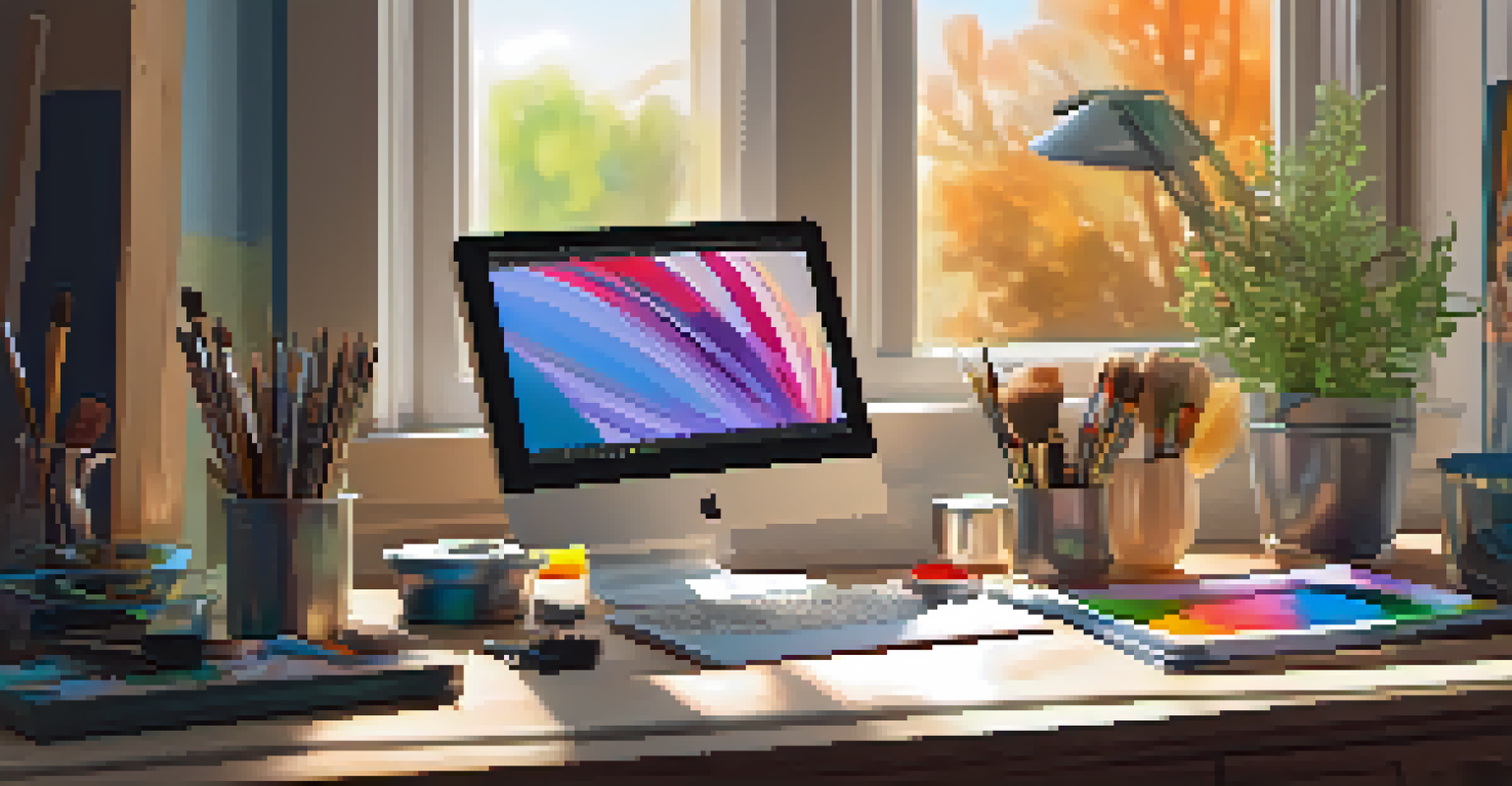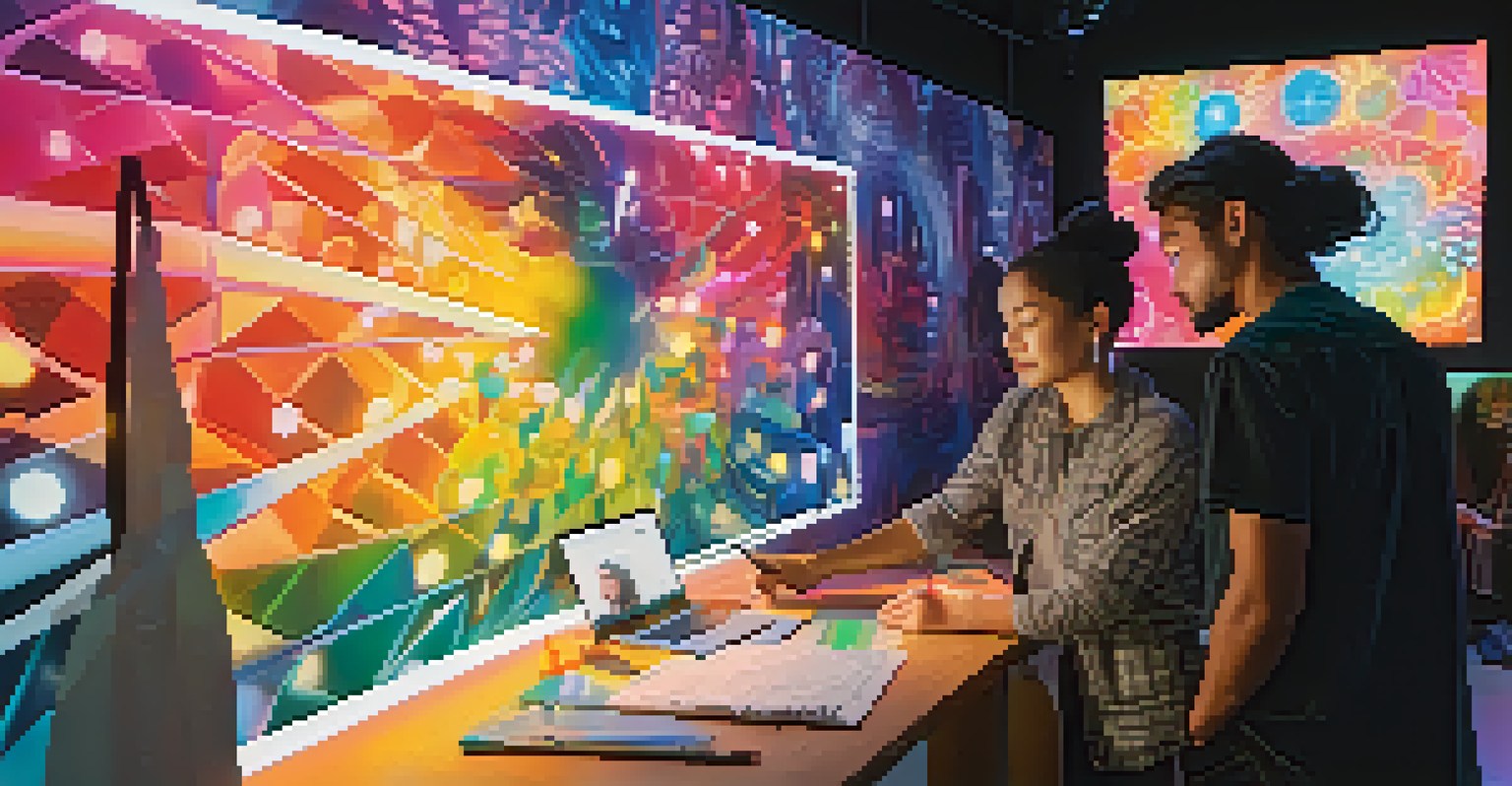Digital Art Communities: Collaboration and Sharing

The Rise of Digital Art Communities in the Online Space
In recent years, digital art communities have blossomed across various platforms. Artists from all walks of life come together to share their work, seek feedback, and connect with others. This shift towards online collaboration has made art more accessible, allowing budding creators to learn from seasoned professionals.
Art is not what you see, but what you make others see.
Social media platforms like Instagram, Twitter, and dedicated sites like DeviantArt serve as virtual galleries. They provide a space where artists can showcase their portfolios while gaining exposure to a global audience. As artists share their creations, they also invite constructive criticism, leading to personal growth and skill enhancement.
This vibrant online ecosystem creates opportunities for collaboration, inspiring artists to experiment with new styles and techniques. It’s not just about individual expression; it’s about building relationships and fostering a culture of support among creatives. The result? A thriving community rooted in shared passion and mutual encouragement.
The Benefits of Collaboration in Digital Art
Collaboration is one of the most exciting aspects of digital art communities. By working together, artists can combine their unique styles and visions, resulting in breathtaking joint projects. This exchange of ideas often leads to innovative creations that might not have been possible individually.

Additionally, collaborating with others can introduce artists to new tools and techniques. For instance, a digital painter might learn about animation from a fellow artist, expanding their skill set. Such interactions not only enhance creativity but also build a sense of camaraderie that enriches the artistic experience.
Growth of Digital Art Communities
Digital art communities have flourished online, providing artists with platforms to share work, seek feedback, and connect with others.
Moreover, collaboration often leads to networking opportunities that can be pivotal for an artist's career. By partnering with others, artists can tap into each other's audiences, gaining visibility and potential clients. It’s a win-win situation that underscores the power of community in the digital art world.
Sharing Knowledge and Resources in Art Communities
Digital art communities are treasure troves of knowledge and resources. Artists often share tutorials, tips, and software recommendations, making it easier for newcomers to get started. This culture of sharing not only accelerates learning but also fosters a sense of belonging among members.
Creativity takes courage.
For example, many artists post step-by-step guides on how they created a particular piece, allowing others to learn from their process. These insights can demystify complex techniques and inspire others to experiment with their own work. It’s like having a mentor right at your fingertips!
Furthermore, shared resources like brushes, textures, and templates can significantly enhance an artist's toolkit. By pooling their resources, community members help each other grow and improve, reinforcing the idea that art is not just about individual achievement but also about collective upliftment.
Showcasing Diverse Styles and Perspectives
One of the most enriching aspects of digital art communities is the diversity of styles and perspectives they encompass. Artists from different cultures and backgrounds bring unique insights and aesthetics to the table. This variety not only enriches the community but also encourages artists to explore beyond their comfort zones.
For instance, a western artist might find inspiration in traditional Asian art techniques shared by a peer. This cross-pollination of ideas can lead to the creation of hybrid styles that reflect a broader range of influences. It’s a beautiful reminder that art knows no boundaries.
Collaboration Enhances Creativity
Working together in these communities allows artists to merge styles and learn new techniques, fostering innovation and camaraderie.
Moreover, this diversity fosters empathy and understanding, as artists learn about each other's experiences through their work. By showcasing varied narratives, digital art communities contribute to a richer dialogue about culture, identity, and creativity, making the art world more inclusive.
Participating in Challenges and Contests
Many digital art communities host challenges and contests that encourage participation and creativity. These events often come with specific themes or prompts, pushing artists to think outside the box and try new techniques. Engaging in these challenges can spark inspiration and rejuvenate an artist’s creative flow.
For example, an artist might participate in a month-long drawing challenge, producing a piece every day based on a different prompt. This not only builds discipline but also results in a body of work that showcases their growth over time. Plus, it’s a fun way to connect with others who are on a similar journey.
Winning a contest can also provide significant exposure and boost an artist's confidence. Many communities feature winning artworks prominently, helping artists gain recognition and potentially leading to freelance opportunities. Challenges are not just about competition; they are about celebrating creativity in all its forms.
Building a Supportive Environment for Artists
Support is a cornerstone of digital art communities, creating an environment where artists feel safe to express themselves. Many members are quick to offer encouragement and constructive feedback, fostering a culture of positivity. This support can be invaluable, especially for those facing self-doubt or creative blocks.
For instance, when an artist shares a piece they are unsure about, community members often rally to provide uplifting comments. This kind of feedback can inspire them to refine their work or try again, reinforcing the idea that every artist has something valuable to contribute.
Supportive Environment for Artists
These communities create a nurturing space where artists can receive encouragement and constructive feedback, helping them overcome challenges.
Moreover, supportive communities can serve as a refuge during challenging times. Whether it’s dealing with rejection or navigating the pressures of artistic life, knowing there’s a network of empathetic individuals can make all the difference. In this way, digital art communities become not just places for sharing art but also for forging meaningful connections.
The Future of Digital Art Communities
As technology continues to evolve, so too do digital art communities. Emerging platforms and tools are making it easier for artists to collaborate, share, and learn from one another. Virtual reality, for instance, is beginning to create immersive experiences that can enhance how artists interact and showcase their work.
Additionally, as the art world increasingly embraces digital formats, these communities will likely become even more integral to an artist's development. They serve as a bridge between traditional practices and modern techniques, allowing artists to navigate this changing landscape.

Ultimately, the future of digital art communities looks bright, with endless possibilities for creative collaboration. As artists continue to come together, the collective impact on the art world will only grow, fostering an environment where creativity thrives and innovation flourishes.